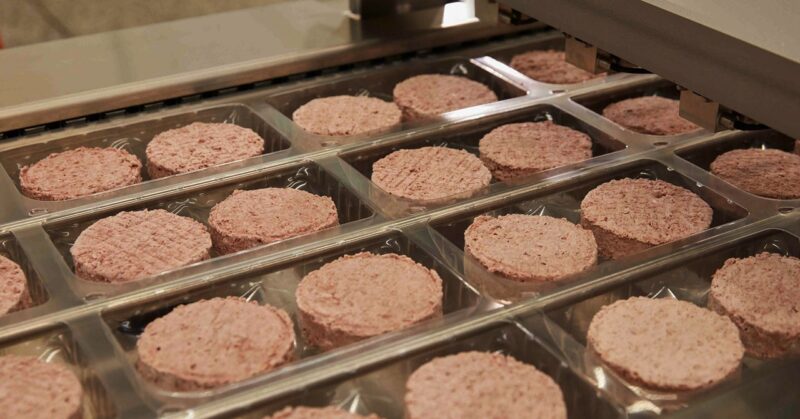Plant-Based Meat Industry facing Challenges
Over the past three years, the plant-based meat industry has experienced a major reversal in vibes. Sales boomed in the early months of the pandemic, as slaughterhouse shutdowns disrupted conventional meat supply chains and shoppers started trying out meatless burgers, sausages, and seafood instead. Between 2018 and 2021, total sales of plant-based foods in the US grew from $4.8 billion to $7.4 billion, with much of that growth driven by plant-based meat in particular.
But a new report on sales of vegan meat, dairy, and seafood suggests that enthusiasm for plant-based products might be slowing down. An annual report from the Good Food Institute, an alternative protein nonprofit, found that dollar sales of plant-based meat and seafood in the US fell by 13 percent over the past two years. As prices of meat alternatives have gone up, this masks a much greater drop in unit sales over the same time period—they fell by 26 percent between 2021 and 2023.
One big challenge in the US is the price of plant-based alternatives. In the US, plant-based meats are on average 77 percent more expensive than their animal equivalents, and for cheap meat like chicken, that premium rises to more than 150 percent. Another problem is one that has dogged the industry for years: Shoppers are still finding plant-based products lackluster compared to animal-based alternatives. “Many consumers signaled that products weren’t yet meeting their expectations on taste, texture, and affordability,” wrote the authors of the report.
Plant-Based Milk Still Leading
Although there has been a lot of excitement around meat alternatives, plant-based milk is still by far the biggest seller when it comes to plant-based foods. Dairy milk alternatives like soy, oat, and almond made up nearly 15 percent of total milk sales in the US, while the share of plant-based meat and seafood in their market is around 1 percent. Plant-based milks alone make up nearly a third of the entire plant-based food category in the US, as defined by the Good Food Institute.
If you add together all other adjacent sectors, including plant-based butter, ice cream, yogurt, and cheese, then US sales of plant-based dairy alternatives accounted for nearly $5 billion in 2023. Dollar sales of plant-based milk grew by 9 percent through 2021–23, although unit sales declined by 10 percent over the same period. Total sales in the plant-based sector, according to the Good Food Institute, were $8.1 billion.
Impact on Climate Change
Fans of plant-based meat point out that people swapping beef burgers for plant-based patties would significantly reduce the carbon footprints of our diets. Animal proteins are a major source of emissions from food, with beef, lamb, and dairy contributing the highest emissions per kilogram of product. But with plant-based meat sales stalling, it’s unclear whether the industry is having the impact on carbon emissions that many hope for.
Prominent brands within the space are trying to move beyond the morass. Earlier this year, Impossible Foods relaunched its range of alternatives with a new, meatier style deliberately aimed at bringing “meat lovers” into the plant-based fold. In February, Beyond Meat launched the fourth-generation version of its burger and ground beef, calling them “our meatiest, juiciest products yet.”
Rising concerns about so-called ultraprocessed food have also buffeted the plant-based meat industry, given the high amount of processing usually needed to make its products. In response, Beyond’s new burgers have less salt and saturated fat than the previous generation, as well as a “simplified ingredient list,” while many other plant-based companies are emphasizing their “clean-label” credentials.
Whether this plant-based pivot succeeds or not, there is a lot at stake when it comes to the climate impact of our diets. For now, it seems, the plant-based revolution—in the US at least—is getting a slower start than many hoped.


